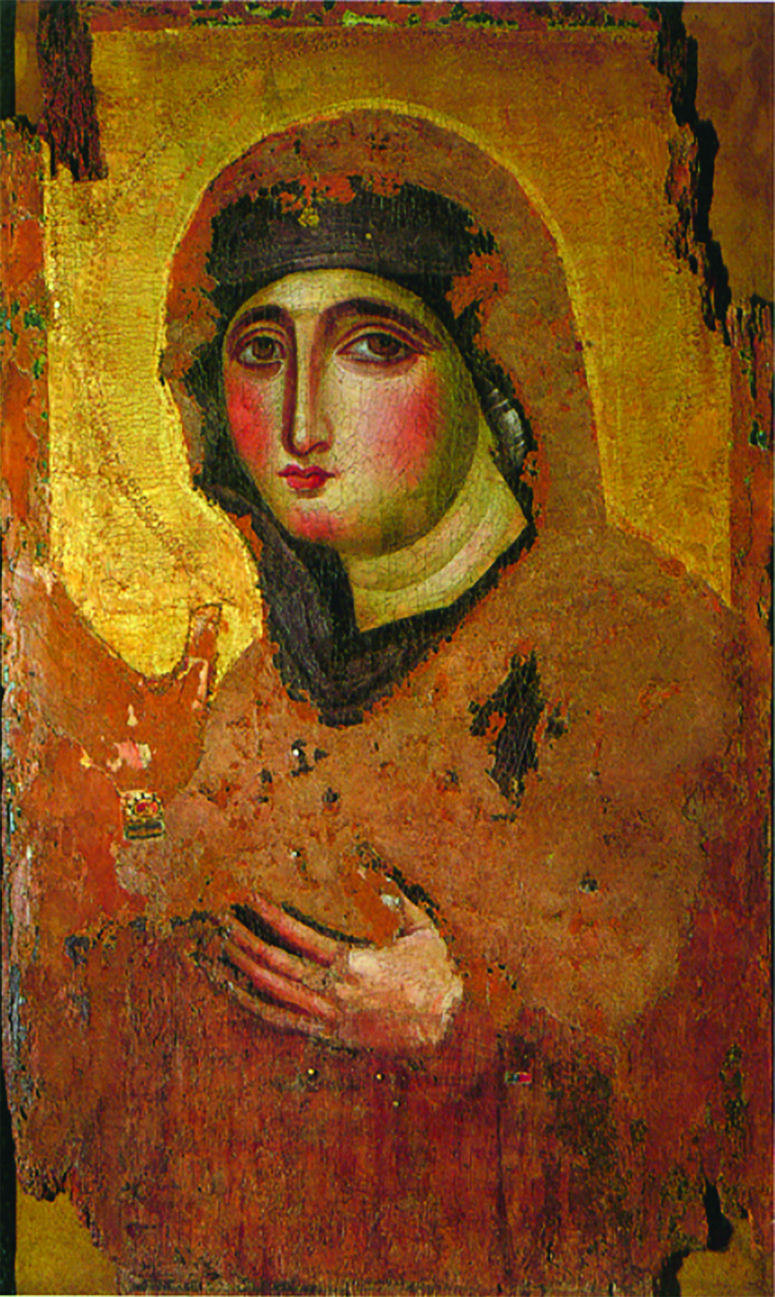“Question for you,” Dr. Ralf van Bühren announced with his finger pointed toward the sky, an endearing mannerism other St. Thomas students and I share in reminiscence. “How can an image have power?”
Dr. van Bühren is an art history professor at the Pontifical University of the Holy Cross (Santa Croce), which is one of the newest academic partners for the St. Thomas Catholic Studies Rome Program. He has been teaching at Santa Croce since 2006, when he completed his doctorate in theology in history of the Church. He also holds a PhD in art history, which he earned in 1994 at the University of Cologne in Germany.
 The definition of power to which he was referring was “influence: changing people, behavior and ideas.” He illustrated this in his discussion of the sixth century icon of the Madonna of San Sisto. Housed in the Dominican convent church of Santa Maria del Rosario on Monte Mario in Rome, the icon represents Madonna Advocata, or the “Virgin Our Advocate.” Mary gazes upon the viewer outside the image with her eyes enlarged to receive and her hands raised in prayer to intercede before God, and she functions as a mediatrix between heaven and earth.
The definition of power to which he was referring was “influence: changing people, behavior and ideas.” He illustrated this in his discussion of the sixth century icon of the Madonna of San Sisto. Housed in the Dominican convent church of Santa Maria del Rosario on Monte Mario in Rome, the icon represents Madonna Advocata, or the “Virgin Our Advocate.” Mary gazes upon the viewer outside the image with her eyes enlarged to receive and her hands raised in prayer to intercede before God, and she functions as a mediatrix between heaven and earth.
Dr. van Bühren used vivid details and his characteristic sound effects to regale the class and bring to life his first encounter with the icon. It was a rare, intimate encounter since, apart from Sunday Mass, the icon is tucked away behind convent doors, protected by a grille, jeweled metal sheath and layer of glass. When he first arrived at the main entrance of the convent, he heard the quiet voice of a Dominican sister from behind the door call out, “Ave Maria.” Dr. van Bühren replied, “I wish to visit and pray in front of the Madonna,” and the door swooshed open. He heard other sisters call out “Ave Maria” as he walked through three additional doors before arriving at the image.
“I saw so many pictures in life, but when I was there I felt like a ship entering into a harbor – coming home – and I had to sit down and rest in front of it,” says Dr. van Bühren, reflecting on his visit with the gentlest yet fullest of smiles. The whole class – seminarians, religious and laypeople, including St. Thomas Catholic studies students – left the lecture that day with a smile on their faces and yet another memory of this wonderful man who was our teacher. Dr. van Bühren is contagiously joyful. Whether it is raining, the peak of springtime allergy season, or a hot and sunny day in Rome, his high spirits lift yours. He credits his cheery disposition to having grown up in Germany’s Rhineland region.
Throughout the semester, Dr. van Bühren underlined the importance of Christian art and architecture and its influence within one’s spiritual life and the life of the Catholic Church. He taught us to understand how art and architecture work as powerful modes of expression that can teach the faith, influence liturgical celebrations, inspire the interests of artists and engage the Church and world. The best works of Christian art are a part of life – part of the cultural identity of Catholics. These images provide an occasion to prayer, helping to evoke contemplation and reflection and to make Christ present in our lives. Christian art is an aesthetic, iconographical result of a personal response to the Incarnation and to the revelation and call of Christ.
It was an immense joy and privilege to have Dr. van Bühren guiding me on a semester-long endeavor to better understand Christian art and architecture. In addition to his engaging classroom lessons, we had on-site lectures, visiting prominent sites, churches and museums around Rome and Florence. I love lecture slides as much as the next art history student, but living in Rome, surrounded by the environment you are studying, was an entirely new experience. Absorbing the rich history of Catholic art and architecture in such an intellectually enlightening and culturally engaging way was utterly spectacular.
As an art history student hoping to pursue a career in academia, I will treasure the ways Dr. van Bühren helped me better experience the fullness and beauty of Christian art and architecture. It helped me see the connections between my faith, my passion for art history and my love of Catholic studies.







